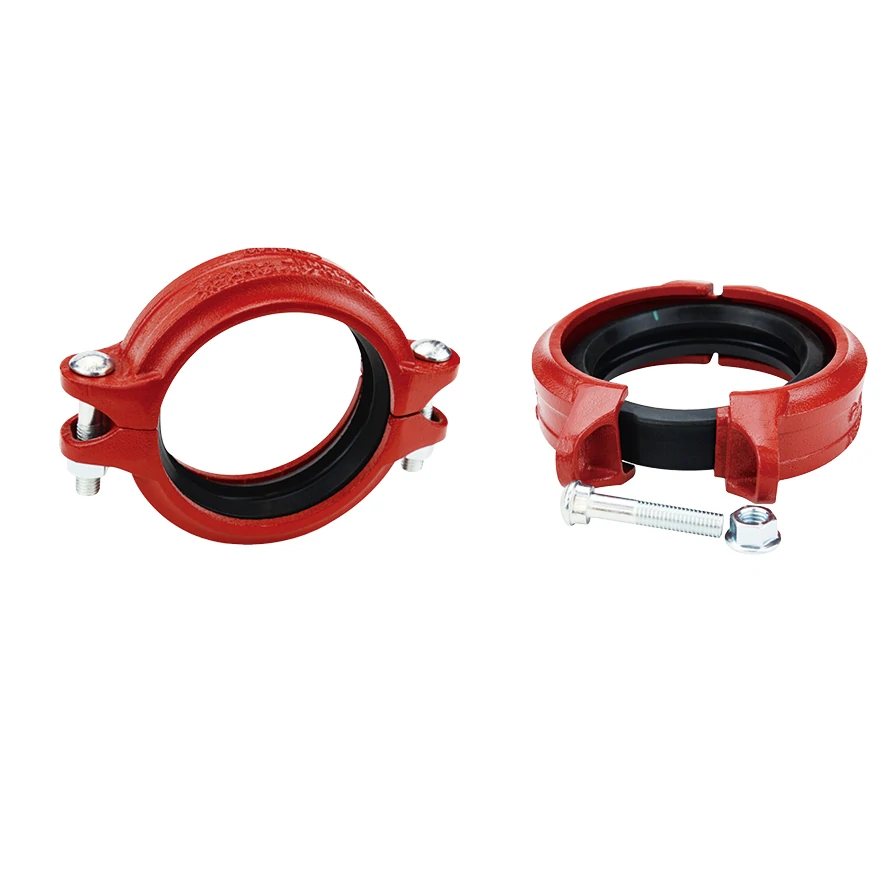Addressing challenges related to thermal expansion or contraction in grooved pipe connections is crucial for maintaining the integrity and functionality of the piping system.
Here are strategies to mitigate these challenges:
- Flexible Couplings:
- Use flexible grooved couplings that allow for axial movement, accommodating thermal expansion and contraction. These couplings can absorb movement without imposing stress on the pipe or causing deformation.
- Expansion Loops or Bends:
- Incorporate expansion loops or bends in the piping layout. These features provide a designated area for thermal expansion or contraction to occur without creating excessive stress on the grooved connections.
- Expansion Joints:
- Install expansion joints at strategic locations within the piping system. Expansion joints are designed to absorb axial movement and vibrations caused by thermal changes. They can be effective in minimizing stress on grooved connections.
- Proper Installation Clearances:
- Ensure that grooved pipe connections are installed with the recommended clearances. Providing adequate space between pipe ends and grooved couplings allows for natural thermal movement without causing binding or stress.
- Guides and Anchors:
- Use guides and anchors to control the direction of thermal movement. Properly designed guides guide the movement of the pipe, while anchors prevent excessive lateral movement that could lead to stress on grooved connections.
- Piping Design Considerations:
- Plan the piping layout with consideration for thermal effects. Avoid long, uninterrupted straight runs and incorporate features like changes in direction to accommodate thermal expansion and contraction.
- Expansion Calculation:
- Perform thermal expansion calculations to estimate the expected movement of the piping system based on temperature changes. Use this information to design the system with the necessary flexibility.
- Temperature Control Measures:
- Implement measures to control the temperature of the fluid within the piping system. grooved pipe connections Maintaining a more consistent temperature can help minimize the extent of thermal expansion or contraction.
- Material Selection:
- Choose materials with lower coefficients of thermal expansion for both the pipes and grooved connections. Materials that expand or contract less with temperature changes can help mitigate the overall effect on the piping system.
- Regular Inspections:
- Conduct regular inspections to identify any signs of stress or misalignment in grooved connections. Early detection of issues allows for timely corrective action and prevents long-term damage.
- Use of Expansion Compensators:
- Install expansion compensators where appropriate. These devices are designed to absorb thermal movement and vibrations, providing flexibility in the system without transmitting stress to grooved connections.
- Training and Awareness:
- Train personnel involved in the installation and maintenance of grooved pipe connections on the importance of addressing thermal expansion and contraction. Awareness can help in implementing proper practices to mitigate potential challenges.
- Compliance with Standards:
- Ensure that grooved pipe connections and associated components comply with industry standards and manufacturer specifications. Adhering to standards provides assurance of the products’ ability to withstand thermal effects.
- Consult with Manufacturers:
- Consult with manufacturers or suppliers of grooved pipe connection systems to obtain guidance on addressing thermal expansion challenges specific to their products. Manufacturers can provide insights into recommended practices.
By implementing these strategies, you can effectively address challenges related to thermal expansion or contraction in grooved pipe connections, ensuring the long-term reliability and performance of the piping system.
